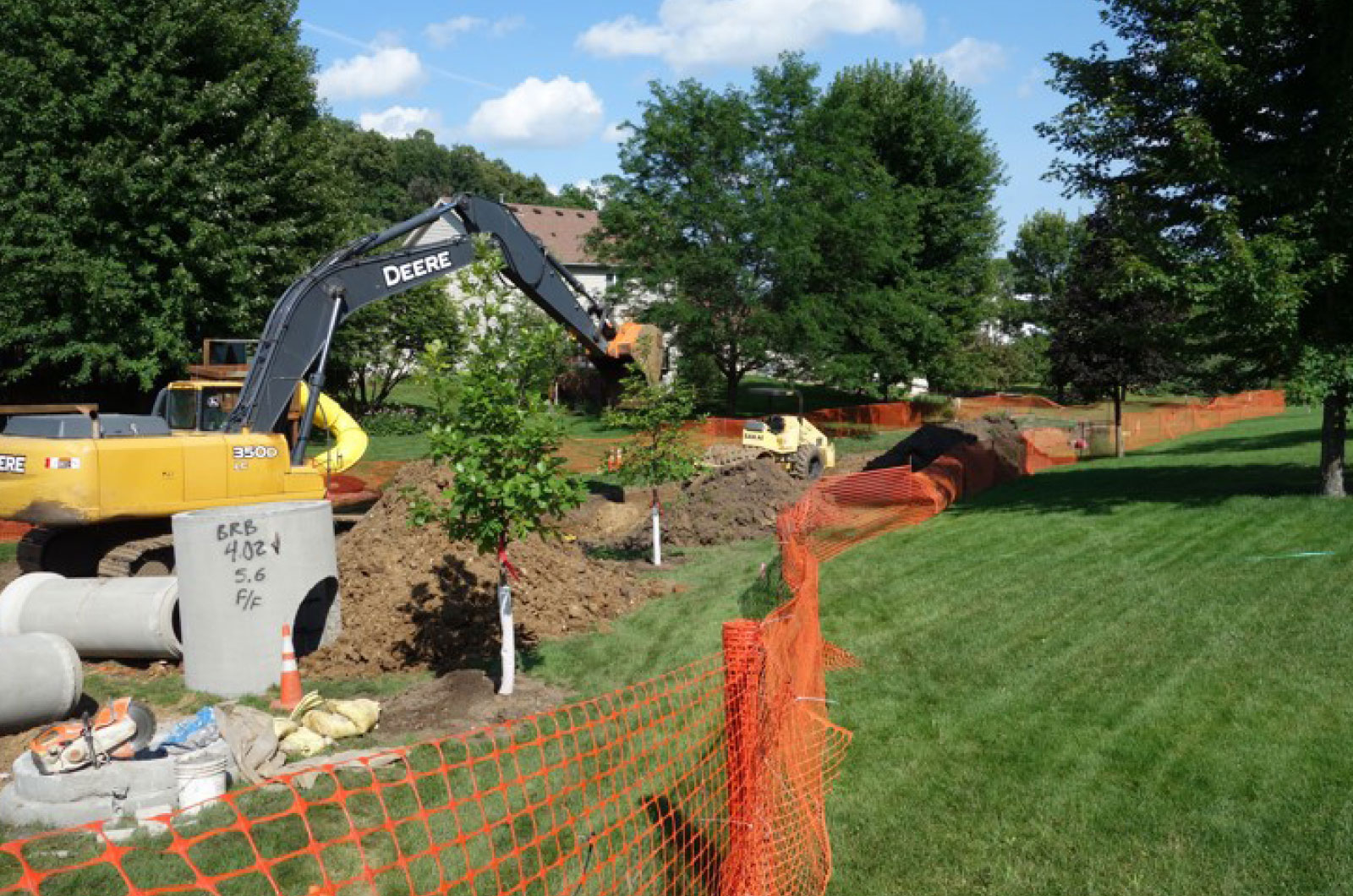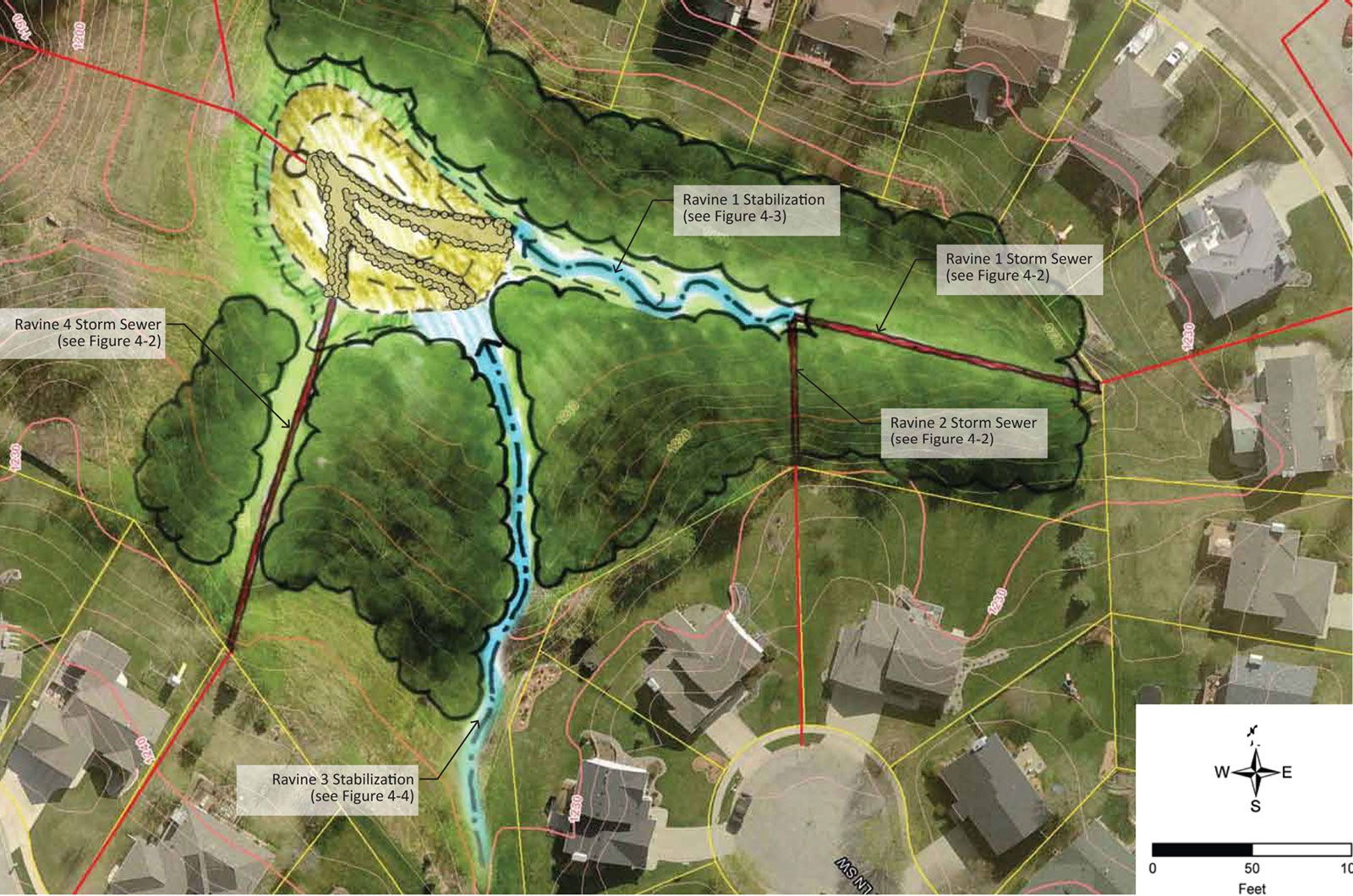The Baihly Woodlands development, located on the top of a hill overlooking the City of Rochester, is not unlike many 1980s housing developments in Minnesota. Stormwater regulations in effect at the time required developments to install ponds in the stormwater conveyance systems to provide water quality measures but mostly to limit discharges downstream once the area was fully developed. With over 20 years of sediment deposition in the Baihly Woodlands ponds and non-functioning outlet control structures, ravine erosion downstream of the ponds and flooding at the bottom of the hill became a regular occurrence. Increased intensity and depths of rainfall in recent years drew increased attention to the failing infrastructure.
SRF performed an extensive forensics investigation to identify potential causes to the flooding and to inform solutions, including discussions with many of the neighbors after several rainfall events. This information was used to construct, calibrate, and validate the XP-SWMM model parameters and provided a tool to evaluate the various flood theories of this complex system. Soil samples were also taken throughout the project location and tested against disposal regulations to further inform the alternative review.
A number of alternatives were studied, with the preferred alternative being a combination of pond maintenance, outlet structure reconstruction to better utilize the pond storage volume, and modifications to the trunk storm sewer system to eliminate flooding near the homes without increasing peak discharges to the downstream system.
SRF prepared construction documents which allowed for a phased approach to maximize funding benefits. The project was ultimately constructed in one phase, and after numerous large storm events has eliminated flooding and stabilized the various ravines.


